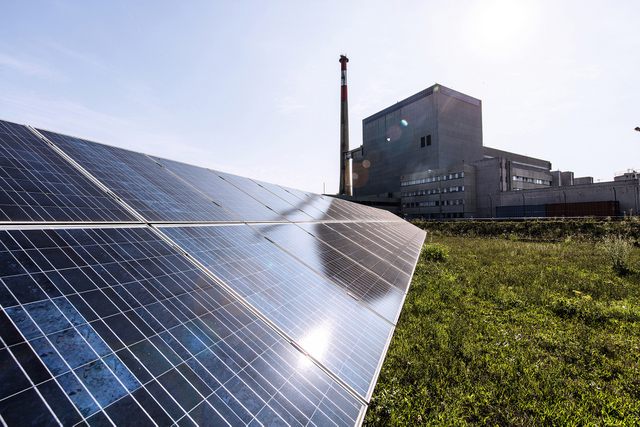Replacing nuclear power with solar in Austria, with help from Fronius
Fronius carried out a special project in Zwentendorf, Austria: a PV system has been installed on the site of a former nuclear power plant. Where once nuclear energy was to be produced, today clean, safe energy is generated from natural resources over an area of 3,700 square meters. The project reflects the Fronius vision of “24 hours of sun.”
Background
This is a unique story: in April 1972 the ground-breaking ceremony for Austria’s first nuclear power plant took place in Zwentendorf an der Donau. Six years later however, a referendum prevented the completed and ready-for-use nuclear power plant from being put into operation. Since 2005 the land has been owned by the energy supplier EVN, who in 2012 built a photovoltaic system on the site.
RELATED: Largest global install of organic PV now underway in Brazil
Enter Photovoltaics
The available space and existing infrastructure of the nuclear power station provided the perfect conditions for building a photovoltaic system. A total of 1,000 PV panels affixed to the façade, roof and the surrounding area of the old power plant constitute an area of 3,700 square meters of clean energy. Fronius Solar Energy provided the necessary solar technology for this. The direct current generated by the solar panels is converted into alternating current by 43 Fronius IG Plus inverters and fed into the public grid.
“This project fully reflects our vision of future energy production,” explains Martin Hackl, head of the Solar Energy Division at Fronius International GmbH. As the global quality leader for solar energy, Fronius has been conducting research into innovative technologies for the photovoltaics industry for over 20 years and with its vision of 24 hours of sun provides a strategy for the energy revolution.
“The switch to renewable energy is inevitable for modern industrial society. Our aim is therefore to create a world in which the demand for energy is completely met by renewable energy sources and to make energy available in a sufficient quantity to everyone, anywhere and at any time,” describes Martin Hackl. This vision makes a reliable, clean, independent and sustainable energy supply possible.






Comments are closed here.